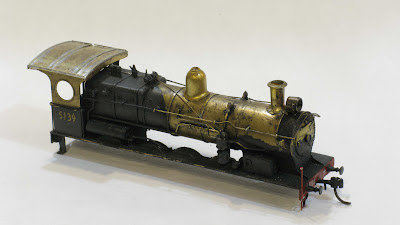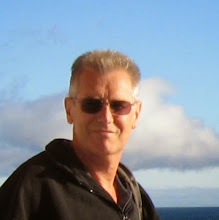I have been looking after my wife after her recent back operation (everything went well and she is doing OK) and having little time for modelling I reverted to a system that I have used down the years. It is simple really, just try to do maybe half an hour every second night or so and you will be amazed how much gets done. I think it is that you know you don't have much time so you focus more instead of navel gazing on "how will I do this"?
Anyway I decide to upgrade a Bergs NSWGR D50 class brass locomotive that would be about 42 years old.
Why bother do I hear you ask, when Eureka is doing the D50?
Simply because I already have one Bergs D50 (5221) which I received as a 21st birthday present and that loco is going nowhere when the Eureka 50s come along.
I upgraded my 5221 way back when David Anderson had his shop and brought in his Mansfield D50 and its brass detail castings. I also have a Mansfield D50 but I couldn't say it is a good runner, it has always had a small bind that I haven't been able to find and rectify.
I thought that I would take my time and add the same details and changes to the second Bergs D50 that I inherited a few years ago from Chris uncle.
Unfortunately I didn't have a can motor to put into this 50 as I did to 5221 several years ago so that will have to wait until I can source another (it requires one with long shafts, most have short shafts to suit diesels).
Now the Bergs 50 had several issues, one being that the cab roof was maybe 1'3" too short at the rear cab overhang, the cab roof had no detail, the marker lights were too large, some of the piping wasn't right, added some more piping and the funnel and dome were a bit small.
I was also lucky to know someone in the electro-plating industry who re-plated the driving wheels of both Bergs 50s as the brass was showing through on the treads and this caused very poor electrical pickup.
Here is the loco with the work underway.
And here it is completed with its sister D50s.
I added a Soundtraxx DRGW K37 Tsunami sound decoder and speaker in the tender like my other two 50s. The tender also had new marker lights fitted and the poor turret tender bogies that were originally fitted had been replaced with the correct ones some time ago. I do have a Lloyds Turret tender kit which I will make up some day to replace the original, or maybe I will use one of the Andian ones when they are released.
Extra pickups were added to the loco and the tender bogies as well as a wiper for the chuff using my method of ACC Super Glue applied to the rear wheel rim of the last driving wheel to make insulated sections.
I have noticed now that it is painted that there is a circular hole in the cab side for access to the sanding gear, for filling I think, so more work to come.
One day I might try re-gearing both of the Bergs 50s to get rid of the worm gear by mounting a gearbox on the rear axle inside the firebox and then sliding the motor inside the boiler barrel but don't hold me to this.
First on the last.
2 days ago






1 comment:
Ray
A good job, & better still Chris coming through the op Ok.
There was a sand box filling hole on each side of the cab, on actual loco's it was a seperate structure that also formed the main base for the cab seats, & kit storage area on the firemans side. They had access doors on the inside of the cab.
The box had an appr 45degre angle along the outside top, with a raised round lid (same as on the leading boxes) on the side for the hoses to go into.
Being slightly off the cab wall it meant water & sand overflil would go to the ground, for a model though a simple lid on a bracket would suffice soldered to inside of the hole.
Col
Post a Comment